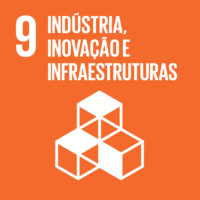Ciência_Iscte
Publicações
Descrição Detalhada da Publicação
Título Revista
HardwareX
Ano (publicação definitiva)
2019
Língua
Inglês
País
Reino Unido
Mais Informação
Web of Science®
Scopus
Google Scholar
Esta publicação não está indexada no Overton
Abstract/Resumo
YOLO is a non-anthropomorphic social robot designed to stimulate creativity in
children. This robot was envisioned to be used by children during free-play where they use the
robot as a character for the stories they create. During play, YOLO makes use of creativity
techniques that promote the creation of new story-lines. Therefore, the robot serves as a tool that
has the potential to stimulate creativity in children during the interaction. Particularly, YOLO
can stimulate divergent and convergent thinking for story creations. Additionally, YOLO can
have different personalities, providing it with socially intelligent and engaging behaviors. This
work provides open-source and open-access of YOLO's hardware. The design of the robot was
guided by psychological theories and models on creativity, design research including user-centered
design practices with children, and informed by expert working in the
field of creativity. Specifically, we relied on established theories of personality to inform the social behavior of the robot, and on theories of creativity to design creativity stimulating behaviors. Our design decisions were then based on design fieldwork with children. The end product is a robot that communicates using non-verbal expressive modalities (lights and movements) equipped with sensors that detect the playful behaviors of children. YOLO has the potential to be used as a research tool for academic studies, and as a toy for the community to engage in personal fabrication. The overall bene
t of this proposed hardware is that it is open-source, less expensive than existing ones, and one that children can build by themselves under expert supervision.
Agradecimentos/Acknowledgements
--
Palavras-chave
Human-robot interaction,Social robot,Hardware design,Personal fabrication,Open access,Open source
Classificação Fields of Science and Technology
- Engenharia Eletrotécnica, Eletrónica e Informática - Engenharia e Tecnologia
- Psicologia - Ciências Sociais
Registos de financiamentos
| Referência de financiamento | Entidade Financiadora |
|---|---|
| SFRH/BD/110223/2015 | Fundação para a Ciência e a Tecnologia |
| UID/PSI/03125/2013 | Fundação para a Ciência e a Tecnologia |
Contribuições para os Objetivos do Desenvolvimento Sustentável das Nações Unidas
Com o objetivo de aumentar a investigação direcionada para o cumprimento dos Objetivos do Desenvolvimento Sustentável para 2030 das Nações Unidas, é disponibilizada no Ciência_Iscte a possibilidade de associação, quando aplicável, dos artigos científicos aos Objetivos do Desenvolvimento Sustentável. Estes são os Objetivos do Desenvolvimento Sustentável identificados pelo(s) autor(es) para esta publicação. Para uma informação detalhada dos Objetivos do Desenvolvimento Sustentável, clique aqui.

 English
English



